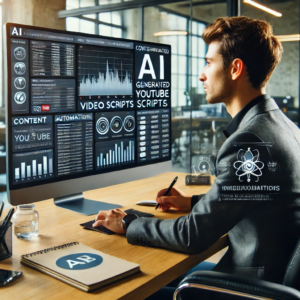The Evolution of Artificial Intelligence: 5 AI Levels Explained for Businesses
As we dive into the fascinating world of artificial intelligence, it’s crucial to understand the AI levels explained through the lens of its evolving capabilities. The journey from simple chatbots to organizational intelligence is a testament to the rapid advancements in this field.
I’ve been exploring the landscape of AI for years, and I’m excited to share my insights on how these technologies are reshaping our world.
The concept of AI has been around since the 1950s, but it’s only recently that we’ve seen such dramatic progress. From basic conversational interfaces to systems capable of complex reasoning, the AI landscape is evolving at an unprecedented pace.
In this article, we’ll explore the five distinct levels of AI, each representing a significant leap in capabilities. We’ll examine how these advancements are impacting various industries, including higher education, and what the future might hold as we move closer to artificial general intelligence (AGI).
We strongly recommend that you check out our guide on how to take advantage of AI in today’s passive income economy.
Table of Contents
Level 1: Chatbots and Conversational AI
The first level of AI, where we currently stand, is dominated by chatbots and conversational AI. These systems have become increasingly sophisticated, capable of engaging in human-like conversations and performing basic tasks.
AI levels explained at this stage focus on natural language processing and generation. These chatbots can understand context, provide relevant information, and even generate creative content.
In the realm of higher education, we’re seeing chatbots being deployed to handle student inquiries, provide administrative support, and even assist with basic tutoring tasks.
While these systems are impressive, they still have limitations. They operate within predefined parameters and can struggle with complex, nuanced conversations.
However, the impact of Level 1 AI is already significant. Businesses are leveraging these technologies to improve customer service, streamline operations, and enhance user experiences.
As we continue to refine these systems, we’re laying the groundwork for more advanced AI capabilities.
Level 2: Reasoners and Problem Solvers
The second level in the AI levels explained hierarchy introduces systems capable of human-level problem-solving. These AI reasoners can break down complex issues, analyze multiple factors, and propose solutions.
At this stage, AI begins to demonstrate more advanced cognitive abilities. It can handle intricate logical problems, make informed decisions based on available data, and even provide strategic insights.
In the context of higher education, Level 2 AI could revolutionize academic advising and curriculum planning. Imagine an AI system that can analyze a student’s academic history, career goals, and learning style to create personalized education pathways.
These reasoners go beyond simple pattern recognition. They can understand cause-and-effect relationships, apply domain-specific knowledge, and adapt their approach based on new information.
While we’re not fully at Level 2 yet, we’re seeing early signs of these capabilities in advanced AI models. The ability to reason through problems marks a significant step towards more autonomous AI systems.
Level 3: Goal-Oriented Agents
As we progress through the AI levels explained, we reach the realm of goal-oriented agents. These systems can work independently towards specific objectives, taking actions and making decisions without constant human oversight.
Level 3 AI combines the conversational abilities of Level 1 and the reasoning capabilities of Level 2, but adds the crucial element of autonomy. These agents can understand complex instructions, develop strategies, and execute tasks over extended periods.
In a higher education context, a Level 3 AI could manage entire admissions processes. It could review applications, conduct initial interviews, and make preliminary acceptance decisions based on predefined criteria.
These goal-oriented agents represent a significant leap in AI capabilities. They can handle multifaceted tasks, adapt to changing circumstances, and even learn from their experiences to improve performance over time.
While we’re still in the early stages of developing Level 3 AI, the potential applications are vast. From managing complex business operations to conducting scientific research, these agents could revolutionize numerous fields.
Level 4: Innovators and Inventors
The fourth level in the AI levels explained progression brings us to systems capable of innovation and invention. These AIs can generate novel ideas, propose original solutions, and even create new technologies.
Level 4 AI represents a paradigm shift in how we view artificial intelligence. Rather than simply processing existing information, these systems can create new knowledge and push the boundaries of human understanding.
In the realm of higher education, Level 4 AI could drive groundbreaking research across disciplines. It could propose new theories, design innovative experiments, and even discover entirely new fields of study.
These innovator AIs would have the ability to combine knowledge from diverse domains, identifying connections and opportunities that humans might overlook. They could potentially solve some of humanity’s most pressing challenges, from climate change to disease prevention.
While Level 4 AI is still largely theoretical, it represents an exciting frontier in artificial intelligence research. The development of truly creative AI systems could usher in a new era of scientific and technological advancement.
Level 5: Organizational Intelligence
The final stage in the AI levels explained hierarchy is organizational intelligence. At this level, AI systems can perform the work of entire organizations, managing complex operations with human-like comprehension and adaptability.
Level 5 AI represents the culmination of all previous levels, combining conversational abilities, reasoning skills, goal-oriented behavior, and innovative thinking into a cohesive, autonomous system.
In a higher education context, a Level 5 AI could potentially manage an entire university. It could handle everything from curriculum development and research management to administrative tasks and strategic planning.
These organizational AIs would have a comprehensive understanding of their operational domain. They could make high-level decisions, allocate resources efficiently, and even adapt the organization’s goals and strategies based on changing circumstances.
While Level 5 AI is still a distant prospect, it represents the ultimate goal of artificial general intelligence (AGI). The development of such systems would fundamentally transform how we think about work, organization, and human-AI collaboration.
Conclusion
As we’ve explored the AI levels explained, it’s clear that we’re on the cusp of a technological revolution. From the chatbots we interact with today to the organizational AIs of the future, each level represents a significant leap in capabilities.
While we’re currently at Level 1 with aspects of Level 2 emerging, the rapid pace of AI development suggests that higher levels may not be far off. As we progress through these stages, we’ll need to grapple with new ethical, societal, and philosophical questions.
The journey through these AI levels explained is not just about technological advancement. It’s about reimagining the relationship between humans and machines, and exploring new frontiers of intelligence and creativity.
As we stand on the brink of these transformative changes, one thing is clear: the future of AI is both exciting and challenging. By understanding these levels of AI development, we can better prepare for the opportunities and challenges that lie ahead.
Frequently Asked Questions
What are the 5 levels of AI?
The 5 levels of AI, as explained in this article, are:
- Chatbots and Conversational AI
- Reasoners and Problem Solvers
- Goal-Oriented Agents
- Innovators and Inventors
- Organizational Intelligence
These levels represent the progression of AI capabilities from basic conversational interfaces to complex systems capable of managing entire organizations. Each level builds upon the capabilities of the previous ones, showcasing the AI levels explained in a hierarchical structure.
What are the 4 stages of AI?
While this article focuses on the 5 levels of AI, some frameworks describe 4 stages of AI development:
- Reactive AI: Systems that respond to input without memory or learning
- Limited Memory AI: AI that can use past experiences to inform future decisions
- Theory of Mind AI: Systems that understand human thoughts and emotions
- Self-Aware AI: AI with human-like consciousness and self-awareness
These stages differ from the 5 levels explained in our article but offer another perspective on AI development. The AI levels explained in our framework provide a more detailed breakdown of current and near-future capabilities.
What are the 5 levels of agents?
The concept of AI agents aligns closely with the AI levels explained in this article. The 5 levels of agents can be described as:
- Simple Reflex Agents: React based on current perceptions
- Model-Based Reflex Agents: Maintain internal state to track aspects of the world
- Goal-Based Agents: Work towards specific goals
- Utility-Based Agents: Maximize a utility function to achieve optimal outcomes
- Learning Agents: Improve performance over time through experience
These agent levels correspond roughly to the AI levels explained in our article, with Goal-Based Agents aligning with our Level 3 and Learning Agents sharing characteristics with our higher levels.
What are the 6 stages of AI?
Some researchers propose 6 stages of AI development:
- Artificial Narrow Intelligence (ANI): Specialized AI for specific tasks
- Artificial General Intelligence (AGI): Human-level intelligence across various domains
- Artificial Superintelligence (ASI): AI surpassing human intelligence
- Artificial Emotional Intelligence (AEI): AI understanding and emulating emotions
- Artificial Social Intelligence (ASI): AI navigating complex social interactions
- Artificial Consciousness (AC): Self-aware AI with subjective experiences
While these stages offer a broader view of potential AI development, the AI levels explained in our article focus more on near-term and medium-term capabilities. Our framework provides a more practical understanding of AI’s current and upcoming abilities in real-world applications.

We strongly recommend that you check out our guide on how to take advantage of AI in today’s passive income economy.




